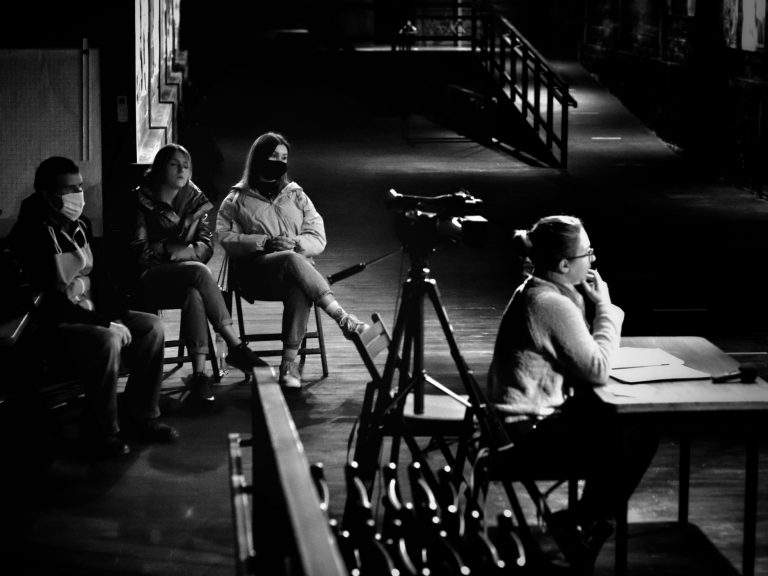The concept of the project
The XX century is rightfully considered to be the era of totalitarianism. Alternately, the Nazi and communist regimes used mass violence against their opponents, separate social groups, and entire communities to achieve ideological, political, and geopolitical goals. The repressive practices of both systems had total character and covered almost the whole society: men and women, old and young, adults and children. Out of all the victims of totalitarian violence, children were perhaps the most vulnerable group. Considering their psychological characteristics, they were extremely saddened by imprisonment, deportations, loss of relatives and home, etc. In addition, children were the subject of political genocide. Until recently, children were a marginal object of historical research. Their experience of surviving under the extreme violence circumstances has not been of much interest to historians and the general public.
The international project «Lost Childhood» aims to partly fill this gap and tell about the children’s experience of Soviet violence. We focus on the fate of tens of thousands of children from Western Ukraine who were deprived of a «happy Soviet childhood» by the communist regime by collective repressions against the families of members of the Ukrainian underground and those who supported it, wealthy peasants in the second half of the 1940s and early 1950s. Based on the method of oral history, the project «gives a floor» to those who fell a victim to Stalin’s deportations at an early age and to those who suffered the trauma of a «lost childhood». Making the memory about this category of victims actual, will provide an opportunity not only to reveal the individual dimension of children’s tragedies under the circumstances of Soviet violence, but also to look at the «war after war» in Western Ukraine through the prism of children’s experiences.

During the Great Terror (1937–1938), children became lateral/concomitant victims of the Stalinist regime repressions against family members of so-called «enemies of the nation». They were detained as criminals in camps, penal colonies (corrective labor colonies) and special-regime orphanages. In two years, about 25,000 children of repressed parents found themselves in orphanages of the USSR. The total number of juveniles in Gulag corrective colonies is estimated at tens of thousands individuals. The significant presence of juveniles in Soviet camps is a reason to talk about the phenomenon of the «Children of the Gulag». Being isolated from society, children eventually were turned into political outlaws. Authorities strove for making them forget (renounce) their parents and «small homeland» and make them the members of the new Soviet community. To do this, they were given new names and surnames. On the background of repressions against juveniles, the authorities also established the propaganda myth about a «happy Soviet childhood». Although on the eve of WWII the repressive pressure on the youngest was weakened, the children of the «enemies of the nation» were discriminated against by the authorities.
WWII, which affected almost every family in Ukraine, also had catastrophic consequences for children. As a result of the war, more than 100,000 children in Ukraine became orphaned, and tens of thousands were left homeless. Thousands of homeless children prowl about public places. The fate of Jewish children who were the target of Nazi genocide was particularly tragic. Along with their parents, they were imprisoned in ghettos, concentration camps, and labor camps, and fully endured the bitterness of exile. Children were killed along with adults. They were exterminated everywhere: near the places of their permanent residence, and in so-called «death factories»; they were the subjects of various forms of violence and sadism, they were turned into the objects of medical experiments. During the Holocaust, chances to survive for children were much lower than for adults. Out of the 6 million Jews killed during World War II, 1.5 million were children.
After the return of the Soviet regime to Western Ukraine, the forced migration of civilians became one of the tools of the counterinsurgency. The families of members of the OUN (Organization of Ukrainian Nationalists) and UPA (Ukrainian Partisan Army) underground and those who supported them, including children, became hostages of the Soviet regime and were repressed on the principle of collective (solidary) responsibility. According to incomplete data, children were the second largest category of deportees from Western Ukraine after women in 1944-1952. In total, more than 210,000 people were forcibly displaced from the Western regions of Ukraine during this period. Most of the children, together with their parents, were resettled in the Omsk region, as well as in the Kazakh SSR, Molotov, Chelyabinsk, Irkutsk, Krasnoyarsk, and Chita regions of the RSFSR (Russian Soviet Federative Socialist Republic).
In 1953, 175,063 members of families of representatives of the insurgent movement from Western Ukraine lived in special-regime settlements, including 47,414 men, 83,905 women, and 40,247 children. In a nonliving environment and constant famine, the children of special settlers were doomed to extinction. On July 5, 1954, the Council of Ministers of the USSR adopted a resolution «About the removal of certain restrictions in the legal status of special settlers», according to which children under 16 were deregistered. However, that didn’t concern children deported from Western Ukraine. They remained outcasts of society for a long time. Children of the repressed parents who were in special-regime settlements, as well as children born on the road to the settlements or born in exile, have not yet been recognized as victims of political repression till now.
